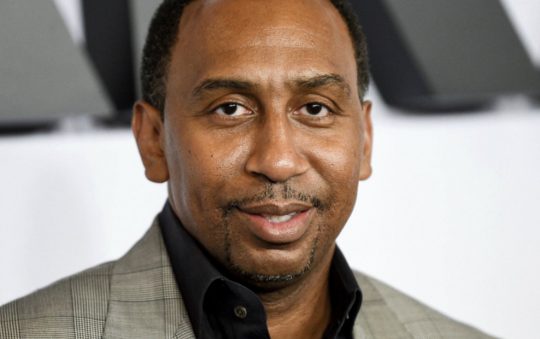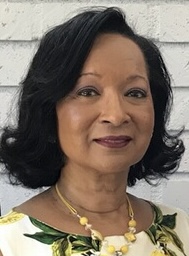
1966: African American Are Amongst The Participants At A
SGI-USA Buddhist Meeting.
Â
Â
A Look Inside the Faith of Buddhism
African-Americans in Los Angeles find happiness and create world peace with Nichiren-Daishonin’s Buddhism
Â
Â
By: Bahati Bethany Meadows
Â
Â
Happiness is a universal aim and everybody wants to be happy. Whether one pursues a romantic relationship for companionship or seeks out educational opportunities for career advancement, happiness is the ultimate goal. Surprisingly, happiness is not a term often used when referring to religious or spiritual practices. There is one flourishing community that African-Americans are a part of in Los Angeles who’s spiritual practice boasts a solid way to help every person be happy and to change their suffering into triumph. This practice is called Nichiren Daishonin’s Buddhism. When most people hear Buddhism they think of praying to a statue of a fat Buddha, but that isn’t the case here. This Buddhism makes each person responsible for changing their own life and achieving happiness in this lifetime.
Â
Nichiren Daishonin’s Buddhism was introduced to many young African-Americans as early as the mid 1960s in Los Angeles. In the following years many saw the challenges of the Civil Rights era and the political upheavals happening throughout the country. It was a time of soul searching and looking for answers to explain the problems of the world. Vocalist and actor Charmaine Mancil recounts how a chance encounter in a Hollywood restaurant in the 1970s made her think of herself in a different way. “I walked into a restaurant on Sunset and it was called Help. My sister …takes me to this restaurant and over the door it says enter and see God,” she explains, “And I say okay, this sounds kinda weird… and we opened the door and there was this large full length mirror so when you walked in you saw yourself. And I cried because I said,’ that’s me, that’s who I am, I am God. I have to control my life, so whatever happens it’s up to me.'” This new perspective led many African-Americans to find answers outside of the dominant religions of the time.
Â
In the 1960s and 1970s young African-Americans attended meetings organized by Japanese brides of American military servicemen who were members of Soka Gakkai International (SGI), which is a lay Buddhist organization that was formed in 1930 to help members correctly practice Nichiren Daishonin’s Buddhism. In a time of civil unrest in the United States the concept of kosen-rufu, which is Japanese for world peace was appealing to many who learned about this Buddhism at the time. In this case world peace is not about stopping all wars and getting countries to sign peace treaties. Kosen-rufu starts with every individual doing their own human revolution, or internal change to improve their own lives and become happy through their own efforts.
Â
“I started my spiritual journey because I wanted to be happy,” says 57-year-old Karen Branham who moved from Washington D.C. to Los Angeles in 1978. “So I was like how do you be happy and they [SGI members] said it’s all inside of you,” Branham recalls. Nichiren Daishonin’s Buddhism says that everything in the universe adheres to the strict law of cause and effect and that everything is connected. So, each person’s life condition and experiences are a direct reflection of what’s happening inside them and they have the power to change it no matter what the condition is. Branham continues, “And the other religions didn’t answer the questions for me about life. How do you go about life and be happy in spite of all the things you have to go through? That was really my quest.”
Â
Branham wasn’t the only one on a spiritual quest. Another East Coast transplant, Ronnie Lawson relocated to Los Angeles in the late 1970s from Baltimore and learned about this practice through a co-worker. Up to this point he had been reading many books on eastern philosophy and exploring different schools of spiritual thought. Lawson was initially skeptical, but after attending several different meetings he finally found a good fit. “I went to a larger meeting, [and] just hearing people chanting Nam-myoho-renge-kyo it just had this affect on me,” Lawson explains, “I could feel it all deep down inside. And I’ve been trying it ever since.” Nam-myoho- renge-kyo is a chant that was developed by a 13th Century Japanese Buddhist monk named Nichiren Daishonin. He believed by chanting Nam-myoho-renge-kyo each individual could awaken their own Buddha nature, which leads to a state of enlightenment and happiness that is possible for everyone. Nam-myoho-renge-kyo translates to “devotion to the mystic law of cause and effect through teaching or sound.” Reciting this chant creates the good feeling described by Lawson and is usually one of the first results of starting this practice. As members continue they also see changes in other areas of their lives, which may include improved family relationships, relief from illnesses, attracting a romantic relationship and even material items like houses and cars.
Â
This Buddhism is not about giving your power over to anything outside of yourself. It puts the practitioner in the driver seat of their own life and that’s what creative writer and former actress Kathy Sheikh likes about it. “They said that it made you responsible for your life. They said that you can’t change other people, but you yourself can change.” Sheikh continues, “That’s what really interested me because they said that you can’t wait for them to change, but if you put it back in your own hands then you have the power to change yourself, not only that, it worked.”
Â
Practitioners like jazz pianist, Harold Land, Jr. practice this Buddhism to be grounded in his career. As the son of jazz saxophonist Harold Land, Sr. he wanted to avoid the common pitfalls that face many musicians. “I knew that it was going to be challenging coming up in a musical household, seeing what the challenges were for my father, ” He explains, ” and the family as well as a lot of my father’s friends, so I knew that if I was going to be a musician I needed to have a spiritual anchor.”
Â
In addition to improving one’s own life practitioners can also chant to help others as well. 81-year-old bass player, A. David Dyson was introduced to this practice by Harold Land, Sr. after he moved from San Diego to Los Angeles in the early 1950s. Beyond just finding happiness for himself Dyson was drawn to and stayed with this Buddhism when he saw what it did for others. “I didn’t feel like there was anything in particular that I wanted to chant for, but I did like that everybody around me was doing so well.” He says, “I really liked this. This is a good reason for me to stick with it if it’s helping the people around me.” Notable members of Nichiren Daishonin’s Buddhism are Grammy award winner Herbie Hancock and singer Tina Turner, who used this practice to fight and leave her abusive husband Ike Turner as seen in the 1995 film What’s Love Got to Do With it.
Â
This Buddhism has not only proved beneficial for many of its early African-American practitioners who started in the 1960s and 1970s it has taken a special interest in raising up youth as future leaders in the organization. To date SGI-USA has 300,000 adherents and is the largest and most diverse Buddhist community in the United States with many youth members. On January 18, 2010 over 500 youth from SGI-USA marched in the Kingdom Day Parade in Los Angeles. Dressed in red, blue and yellow t -shirts the youth excitedly danced and performed in the pouring rain. Their participation in the parade was to gear up for Rock the Era, which is a campaign spearheaded by SGI youth to celebrate the 80th anniversary of the organization in July. 18-year-old Kevin Jackson participated in the parade with the hip hop dance group and has been practicing this Buddhism since 2007. He has found that this Buddhism has helped him be more courageous in life. “I used to be an angry kid, and as I slowly learned chanting I felt better because I would let my stuff out, [and] people would understand me,” he continues, “As I chant I learn, well maybe if I’ll be calm and stop letting this stuff get to me and face my problems head on instead of have something else do it for me, I can conquer them.” The point of this Buddhism is not to have a problem free life because they are inevitable. The aim is to give each person the ability change their circumstances and make the impossible possible.
Â
Amina Saviet, an SGI-USA Young Women’s Division leader learned about this Buddhism while interning at a family law practice in downtown Inglewood. When a co-worker saw the 22-year-old reading a book on Buddhism she invited Saviet to attend a meeting and from then on she was immediately hooked. “I was 19 when I became a Buddhist and I feel so fortunate to find this kind of life philosophy so early on in my life.” Saviet says, “I can constantly see the way I’ve been changing and I could see changes in other people that I didn’t used to. I really feel like this Buddhism is like a six sense, like having the gohonzon is a tool and it just opens up so many areas of my life.” A gohonzon is a mandala, which is a scroll that is inscribed with the good and bad forces in the life of every person. When chanting Nam-myoho-renge-kyo the gohonzon is the object of devotion and mirrors back the potential for greatness, which each person already has inside of them.
Â
Nichiren Daishonin’s Buddhism is for African-Americans living in the modern world. Practicing this Buddhism doesn’t require its practitioners to take long, grueling retreats or meditate in isolation for hours. It’s about being a Buddhist and functioning within society. These African-American Buddhists work alongside you at the hospital, the grocery store and at the entertainment company. There’s a major draw to this Buddhism because it puts the practitioner in control of their own destiny, so there is no outside force to blame when life’s challenges get difficult. Regardless of the obstacle any person can chant Nam-myoho-renge-kyo to see improvements in their life. Also, this practice doesn’t focus on happiness being possible when you get to heaven or fearing a vengeful God like other dominant religions practiced by African-Americans. Practitioners of Nichiren Daishonin’s Buddhism can be happy right now in this lifetime. And with the organization’s goal of creating kosen-rufu, or world peace, this Buddhism is starting with each person and making a cause for everyone to be happy one person at a time.
Â






